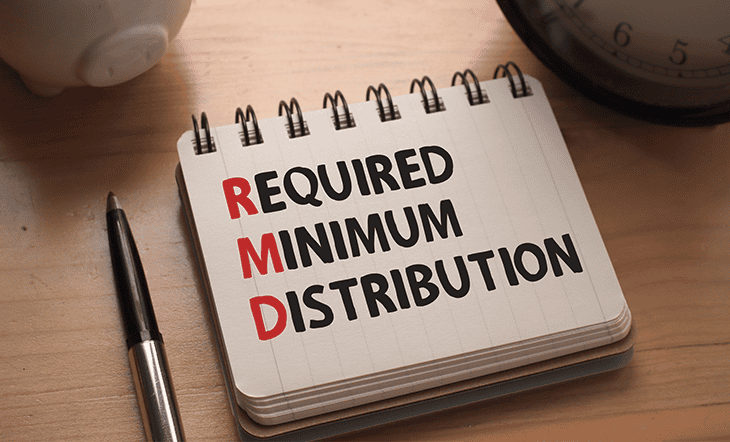Home > Retirement > What Happens if My 401(k) Retirement Plan Changes?
What Happens if My 401(k) Retirement Plan Changes?
There is a lot that can change from when you first open a retirement account, to when you retire. You are likely to grow professionally. Your income will increase, and you may switch jobs and even move career lanes. In addition to this, your priorities will also alter. You may start by saving only for yourself and your spouse, but may need more funds down the line if you have children. In addition to this, there can be modifications to your plan from your company’s side. The plan administrator may change, your company can be bought over by another business, the investment options within the 401(k) can differ in different jobs, etc.
Life goes on, and things continually change. However, it is essential to keep saving and planning for your retirement needs, irrespective of these changes. Your retirement life will depend on the savings you make today. So, ensure that you have enough money in your retirement fund to last you a lifetime. This may be challenging, especially if you have to deal with any 401(k) plan changes along the way. To learn more about how to adjust and accommodate your finances in line with changing retirement plans, consult with a professional financial advisor who can advise you on the same.
Read below to understand what happens if your employee retirement plans see alterations over time and how you can continue reaping the rewards despite these changes.
Table of Contents
Circumstances that lead to 401(k) plan changes:
1. Changing jobs
According to the findings of a recent study, the average American can have 12 jobs throughout their career. Americans stay for an average of 4.1 years with the same company. Additionally, 65% of people may be actively searching for a new job right now. Switching your job can have a ton of advantages, including better salaries, higher positions, the opportunity to learn and grow, and more. However, it can also have certain disadvantages, particularly in the case of a 401(k) retirement plan.
A 401(k) retirement account is a tax-advantaged account offered by an employer to their employee. This company-sponsored plan can have a host of benefits, such as tax-deferred financial growth, employer matches, multiple investment options, and more. The account also offers two types – traditional and Roth. The former is taxed in retirement but offers tax-free contributions, while the latter is taxed in the present but provides tax-free withdrawals in retirement.
The 401(k) plan is offered by a company, so if you change jobs, your employer will no longer offer you a 401(k). In such a case, the employer match, if any, will stop. You would also not be able to contribute to the 401(k) anymore. However, you do not have to stop saving in a 401(k) altogether.
You can use one of the following methods to continue saving through your 401(k):
- Transfer the money from your old 401(k) to the new 401(k): If you are changing your job and your new employer offers a 401(k) account, you can move your money. This can help you continue with your savings. Moreover, it will be easier to track your savings. You can opt for a direct 401(k) rollover from the old account to the new one once a year. This will eliminate any taxes and penalties associated with early withdrawals. Once you have rolled over your money, you will be able to select the new company’s investment options and invest your money accordingly.
- Withdraw your money: You can withdraw your money and deposit it into the new account. However, there are some things to remember if you select this option. Firstly, you must deposit the funds to the new account within 60 days of withdrawing. If not, the Internal Revenue Service (IRS) will consider it an early withdrawal if made before the age of 59.5. In this case, you would have to pay a 10% penalty and income tax on the withdrawn amount. In addition to this, your old employer will keep 20% of your money to prepay the tax due on your savings. So decide after carefully reviewing these factors.
Another thing to keep in mind when changing jobs is that if you have an ongoing loan through your 401(k), you will have to repay it. If not, your loan will be considered an early withdrawal and taxed per the income tax slab, along with being penalized at 10%.
2. Business mergers
Different companies can offer different employee retirement plans. So, in the case of a company merger, your new employer may offer a new 401(k). Your plan can be subjected to three outcomes. In the first scenario, your 401(k) will be merged with the new employer’s plan. In this case, the new plan’s rules, investment options, etc., will automatically apply to your 401(k). The employer match can also be changed depending on what the new employer offers. In some cases, it may also be entirely removed. Moreover, since the merger can take a few days to a few months, you can be locked out of your plan until all formalities are completed.
In the second scenario, your plan will continue as it is, and the new employer may not offer a new 401(k) at all. In this case, there will be no 401(k) plan changes, and you can invest as before. The new employer may also offer a new plan, and you can choose to switch if you want. You can follow any of the above-mentioned methods, such as a direct rollover or withdrawal.
The last possibility is the complete dissolution of the plan. If this happens, you will not lose your existing money, but you will not be able to invest anymore. The invested capital so far will stay in the plan and can be withdrawn after the age of 59.5 years. However, there will be no new contributions to your plan. In this scenario, you may eventually be asked to switch to an Individual Retirement Account (IRA).
3. 401(k) plan changes made by the company
The employer can make modifications to the 401(k) plan from time to time. In most cases, employers change the plan administrators. If this happens, employees are informed of the changes within 210 days of the end of the year the change was made. A document known as the Summary of Material Modifications (SMM) will be sent to you with detailed information on the modifications. You must pay attention to a few things if and when this happens. Firstly, check whether your account balance is the same or not. You can look at the last statement from the old administrator and compare it to the first statement from the new administrator. In the case of any discrepancies, you can reach out to the company’s human resources or payments department. It may also be advised to check other critical information, such as the names of the beneficiaries. In the case of your death, the nominee on the 401(k) account will be given the money and not necessarily the nominee mentioned in your will. Therefore, make sure there are no mistakes on your account after changes to the plan’s administrator. Again, in the case of any misinformation, reach out to your HR immediately. Lastly, you must check the asset allocation of your plan. The new plan administrator may change the asset allocation during the transition. So, go through your investment portfolio to confirm if there are any changes. Additionally, check your contribution rate too.
Can I change my retirement plan?
Yes, you can change your retirement plan if you switch or quit your job. However, you must pay attention to some aspects, such as:
Check the available investment options:
The investment options can differ from plan to plan. So, make sure to browse through the options before making a transfer. Look for employee retirement plans that offer a mix of different investment options, such as mutual funds, exchange-traded funds, stocks, bonds, target-date funds, etc. The wider the choice, the better it is.
Look at the charges and fees of the new plan:
401(k)s come with administration, maintenance, and transaction fees. This can differ for different companies. Make sure that the new plan offers a more competitive fee structure. You may not benefit in the long run if a plan has higher costs. This is important in the case of 401(k) to 401(k) and 401(k) to IRA rollovers.
Ask for an employer match:
If you are changing your job and want to switch to a new 401(k), you should try and negotiate an employer match. Not all companies offer an employer match. However, most are willing to do so to retain good employees for a longer time. Negotiations are easier, especially if you are in a higher position in the company. However, you should still try to get a match with some negotiation, no matter your age or experience level.
Make sure you know the contribution limits:
The contributions can differ for different employee retirement plans. For instance, as of 2022, you can contribute up to $20,500 in a 401(k) if you are under the age of 50. If you are 50 or older, you can make another catch-up contribution of $6,500 and invest a total of $27,000 per annum. However, an IRA, often considered a good substitute for a 401(k), offers considerably fewer contribution thresholds. As of 2022, you can contribute only up to $6,000 if you are under the age of 50 and an additional $1,000 in catch-up contributions if you are 50 or older, bringing the total to $7,000. Moreover, you will lose out on the employer match if you quit a 401(k) and move to an IRA. Even though the investment options remain the same, more or less, your total accumulated capital over the years will be a lot lower in an IRA, and you will lose out on possible returns at maturity.
Think about your employer stock:
A lot of companies offer their own stocks to employees through the 401(k) account. You may receive tax breaks from the in-kind distributions of these stocks till you work with the same company. However, these could be lost the moment you roll over to a new account or plan administrator, thereby triggering your tax liabilities.
Know the vesting period:
401(k) plans have a vesting period before the funds are actually yours. If your employer offers a 401(k) match, chances are that they may also impose a vesting period. This is usually used to encourage employees to stay around for longer. Unless you are fully vested, you stand to lose some or the entire portion of the employer’s match when you switch from one 401(k) to another retirement account. Having said this, the vesting period can differ from one company to another. So, you may discuss this with your employer before finalizing your decision.
What are some of the 401(k) plan changes you should be wary of?
If your 401(k) account balance is less than $5,000 and you switch jobs, your former employer can move your money to an IRA chosen by the company. Further, if you have less than $1,000, the employer can write you a check for the total value. In this case, you would have to deposit the same into a new 401(k) or an IRA within 60 days from when the check was issued. The failure to do so will result in a 10% penalty and income tax as per your total annual income for the year if you are under the age of 59.5 years.
How can you secure your retirement financially outside of employee retirement plans?
Investing your money outside of employee retirement plans is equally essential to protect your retirement financially. You can do so by creating a diversified portfolio full of stocks, mutual funds, bonds, real estate, and more. This will ensure that your investments are unaffected by your employment status and type. Moreover, it also enables you with a stronger financial foundation.
To conclude
401(k) plan changes may seem out of your control. However, you have plenty of options to adjust your financial plans to these changes and still be on track to achieve your financial goals. It is important to stay up to date on the laws and provisions of employee retirement plans. This can help you make the right decision at the right time and avoid any losses due to penalties or taxes. Additionally, it is also essential to adopt a comprehensive and diversified approach to investing. Avoid relying on a single retirement account for all your needs. Instead, you can distribute your investment budget across different investment instruments. This can help lower the overall risk and boost your returns.
If keeping up with 401(k) plan changes seems confusing to you, consider hiring a professional financial advisor who can help you in managing your finances accordingly. Use Paladin Registry’s free advisor match tool and get matched with 1-3 vetted advisors suited to meet your specific financial needs.
To learn more about the most suitable tax-saving strategies for your specific financial requirements, visit Dash Investments or email me directly at dash@dashinvestments.com.
About Dash Investments
Dash Investments is privately owned by Jonathan Dash and is an independent investment advisory firm, managing private client accounts for individuals and families across America. As a Registered Investment Advisor (RIA) firm with the SEC, they are fiduciaries who put clients’ interests ahead of everything else.
Dash Investments offers a full range of investment advisory and financial services, which are tailored to each client’s unique needs providing institutional-caliber money management services that are based upon a solid, proven research approach. Additionally, each client receives comprehensive financial planning to ensure they are moving toward their financial goals. CEO & Chief Investment Officer Jonathan Dash has been covered in major business publications such as Barron’s, The Wall Street Journal, and The New York Times as a leader in the investment industry with a track record of creating value for his firm’s clients.
Other posts from Jonathan Dash
Here’s Why Every Tax Season is a Good Time to Revisit Your Financial Investments
The tax season is the perfect time to take a closer look at your financial investments. The 2025...
3 Key Financial Habits That Set Wealthy Retirees Apart
The wealthy may seem to have it all figured out, but their success is the result of years...
Things You Should Know About RMDs if You Are Turning 73
Retirement accounts like the 401(k) and the Individual Retirement Account (IRA) are broadly classified as traditional, and Roth based on their taxability....




